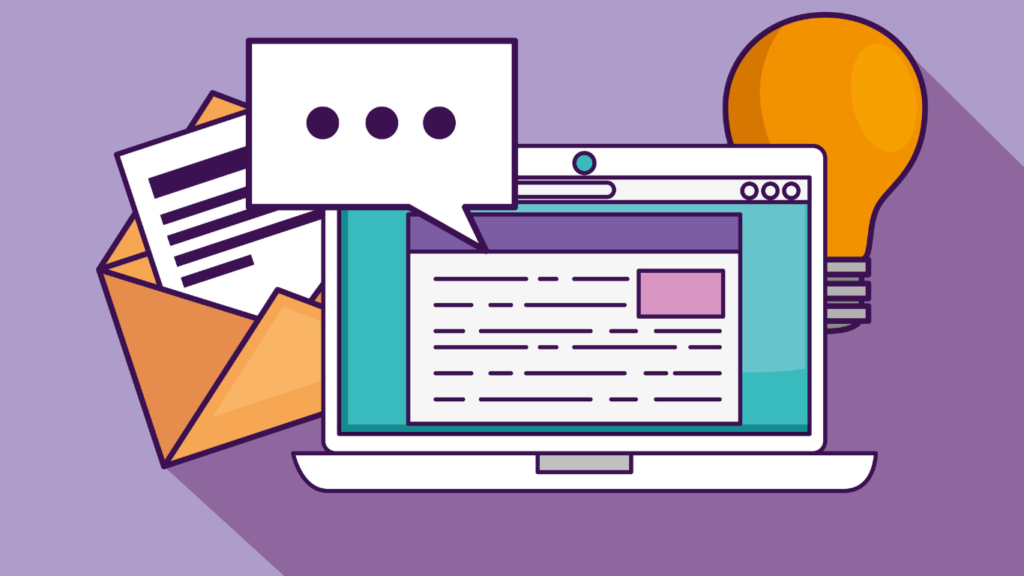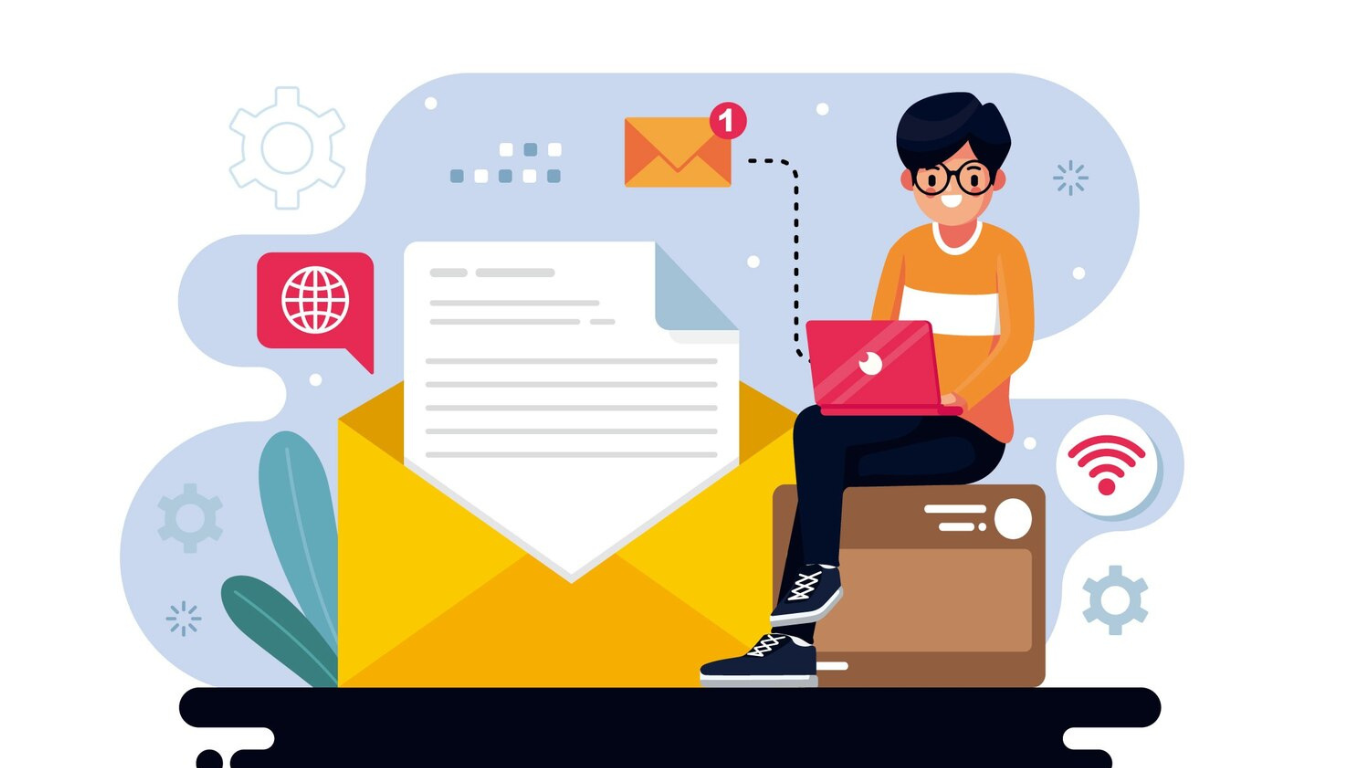In the fast-paced digital age, writing effective emails can be time-consuming and even downright difficult. Whether you’re gazing at a blank screen trying to figure out where to begin, having trouble getting the tone right, or just trying to keep up with a mountain of mail, AI technology provides a strong solution. This in-depth guide examines how to write emails using AI, revolutionizing your communication process while still keeping that all-important human touch.
What is AI Email Writing and Why Should You Care?
AI email writing uses artificial intelligence to assist in drafting, editing, and refining your email messages. Such advanced tools extend well beyond plain old spell-checking or template-based solutions – they employ highly sophisticated natural language processing (NLP) and machine learning techniques to create natural-sounding content based on your input.
Modern AI writing assistants can understand context, learn from your preferences, and produce content that sounds authentically like you. They’re designed to be collaborative partners that amplify your voice rather than replace it.
“AI technology is changing everyday tasks in every industry. Today, it is revolutionizing the way we compose email. AI email authors are the future of communication, making your emails quicker, brighter, and better,” says a new industry report.
Why should you care? Because email is still an important communication tool:
- The average businessperson spends 28% of their workday on email
- Most individuals receive more than 100 emails per day
- Email efficiency has a direct effect on professional relationships and business results
With the skills of writing emails using AI, you’ll recover hours of your week while at the same time possibly enhancing your communication quality.
The Emergence of Email Writing Technology
Email writing technology has transformed significantly over the last decade:
- Primitive spell checkers – Detected simple spelling mistakes
- Grammar tools – Identified grammatical errors and recommended corrections
- Template systems – Provided pre-written templates for standard situations
- AI-powered assistants – Generate customized content based on your intent
Today’s AI email tools represent a quantum leap forward, offering capabilities that would have seemed like science fiction just a few years ago. They can analyze the context of your correspondence, understand the relationship with your recipient, and help craft messages that achieve your specific goals.
The Benefits of Using AI to Write Emails
Save Significant Time
One of the most compelling reasons to write emails with AI is the dramatic time savings. What may take you 15 minutes to draft from scratch will take seconds with AI.
“AI profoundly accelerates email writing. Auto-writing which took minutes or hours previously is now seconds. AI software rapidly creates entire emails with minimal inputs and enables you to respond faster and write more letters,” email productivity studies3 claim.
Such efficiency proves especially useful when processing:
- Recurring correspondence that occurs according to predictable patterns
- Situations involving high-volume communications
- Terse explanations which need to be thoroughly worded
- Situations where you are having writer’s block
Enhance Quality and Clarity
AI email assistants ensure your emails are grammatically correct, well-formatted, and clearly conveyed:
“AI keeps your emails grammatically correct and tone-natural. Advanced language models are designed to catch and fix mistakes in real-time and suggest improvements that make the reading easier and more professional,” says industry research3.
This feature assists you:
- Eliminate humiliating typos and grammatical mistakes
- Make your message easy to comprehend
- Project a professional image
- Explain complicated ideas better
Keep Communication Consistent
Another important benefit of employing AI to compose emails is keeping your voice consistent in all your communications:
“One of the best things about AI is that it can learn and emulate your writing style. By scanning your previous emails, AI software keeps your voice and style consistent in your communications. This consistency is crucial for personal branding,” says a productivity expert3.
This consistency benefits both individual professionals and organizations by:
- Strengthening your personal communication brand
- Ensuring team communications maintain a unified voice
- Creating a more cohesive customer experience
- Building trust through reliable communication patterns
Craft More Effective Responses
AI email tools can analyze the messages you’ve received and help craft more effective responses:
“Professional writing often involves sending email to peers, clients, collaborators, and other stakeholders. Whatever the context – providing news, reporting fruitful meetings, requesting information – your communications must be effective, easy to understand, and free from grammar errors,” counsels Microsoft’s how to write e-mail guide.
With insight into the meaning and purpose behind the original communication, AI is able to assist you:
- Respond fully to questions or concerns posed
- Avoid or adopt inappropriate formality of language
- Mitigate needed details from unnecessary overcommunication
- Roll forward a response to discussions constructively
Popular AI Email Writing Tools in 2025

The market for AI email writing tools has expanded significantly. Here’s a rundown of some top solutions:
Comprehensive Email Platforms
Superhuman balances beautiful design with robust AI powers:
“Superhuman is an email program that makes each aspect of email management more streamlined. And integrates with Gmail and Outlook. It has a reputation for having a clean interface and can be utilized to write copy, set up incoming emails, and work with your team members,” based on current reviews.
Main features are:
- Full email generation from short prompts
- Keyboard shortcuts for productivity
- Split inbox organization for enhanced productivity
- Contact information integration
Sales-Focused Solutions
Lavender addresses professionals who are dependent on email outreach:
“Lavender is an AI-driven email assistant to assist you in writing better emails. The analytics tools indicate how your emails are performing. And suggest improvements,” observes industry analysis.
The tool specifically performs well in:
- Personalizing email content based on recipients
- Scoring emails for maximum effectiveness
- Monitoring open and reply rates
- Writing emails from scratch with AI support
Marketing Email Tools
Semrush’s AI Writing Assistant targets marketing communications:
“The AI Writing Assistant app makes content writing automatic. Including for emails. If you’re a business owner or marketer who wants to make your email communications more efficient, this tool can be utilized to write cold emails, generate follow-up emails, write compelling subject lines, and write confirmation emails,” as per Semrush documentation.
Integrated Office Solutions
Microsoft Copilot offers AI writing support within familiar Microsoft applications:
“AI-based software, like Microsoft Copilot, provides features that can improve your email writing” by fixing grammar and spelling, making it clearer, and suggesting improved communication.
| Tool | Best For | Key Strength | Works With | Price Range |
| Superhuman | Busy professionals | Speed & efficiency | Gmail, Outlook | $30-40/month |
| Lavender | Sales teams | Personalization | Email clients, CRMs | $27+ per user |
| Semrush AI | Marketers | Marketing optimization | Standalone | Part of Semrush suite |
| Microsoft Copilot | Office users | Integration | Microsoft 365 | $20+ per user |
| Brevo AI | Email marketers | Subject line & content creation | Email marketing platform | Various plans |
How to Write Emails with AI: A Step-by-Step Guide
Define Your Purpose and Audience
Before you use any AI tool, clarify:
- What specific result you expect from this email
- Who you’re writing to and your relationship
- The most important information that needs to be in there
- The tone and level of formality that is appropriate
Having clarity on these points enables you to give better instructions to your AI assistant and judge its output better.
Select the Right AI Tool for Your Needs
Choose an AI email solution from the following based on your precise needs:
- Volume of emails – Number of emails you send per day?
- Type of communication – Personal, professional, marketing, sales?
- Integration needs – Does it integrate with your current email software?
- Budget considerations – Free, subscription, or enterprise level?
“These AI email assistants are useful for anyone who uses email regularly—entrepreneurs, marketers, etc.,” notes industry research, but finding the right match for your specific needs is important.
Provide Clear Instructions to Your AI Assistant
The quality of AI-generated emails largely depends on your input. When prompting your AI writing assistant:
- Specify the email’s purpose (introduction, follow-up, request)
- Indicate desired tone (formal, conversational, urgent)
- Include key points that must be covered
- List any particular phrases or details to include
- State length preference (short, detailed, thorough)
For instance, rather than asking “Write a follow-up email,” ask: “Write a follow-up email to a prospective client who asked for our proposal last week. Thank them for their time, assure we’ve sent the proposal, and propose a call next Tuesday to answer questions. Use a professional but friendly tone.”
Review and Edit the AI-Generated Draft
Never send an AI-written email without checking. Check for:
- Accuracy of all facts and information
- Tone suitable for your relationship with the recipient
- Natural flow and logical organization
- Chances to include personal touches
- Any unnecessary filler text that can be cut
AI can enhance your email writing by creating drafts, providing edits, and making suggestions,” but the final check is still a necessary human step.
Add Your Personal Touch
The most effective AI-generated emails blend AI efficiency with human touch:
- Call out to unique shared experiences or past conversations
- Add information that shows your personal familiarity with the recipient
- Inject your own insights or perspective
- Use your signature sign-off and signature
Such personalization will keep your AI-generated emails feeling personalized, rather than templated.
Test and Optimize Your Strategy
Refine your AI email writing process on an ongoing basis:
- Monitor response rates to varying AI-generated emails
- Identify which prompts yield the best results
- Save successful emails as templates to reuse later
- Tweak your strategy based on feedback and outcomes
Specialized Applications: Writing Various Types of Emails with AI
Cold Outreach Emails
When writing cold outreach emails using AI, emphasize personalization and value:
“Generative AI enables building personalized messaging that would increase the recipient’s interest in your brand, potentially increase open and click-through rates, and ultimately better conversion rates,” observes marketing research.
Cold email tips with AI:
- Learn about your prospect prior to writing
- Mention specific information about their company or history
- Get across the value proposition clearly
- Make it short and about them, not you
- Let AI create variations to test
Follow-up and Nurture Emails
AI is great at building effective follow-up sequences:
“By using generative AI, you can build personalized emails that you can add to your email marketing messages,” which can greatly enhance engagement in nurture campaigns.
Best practices are:
- Reference previous points of conversation
- Add more value with every follow-up
- Use proper timing between messages
- Let AI provide suggestions for next best actions
- Test various methods to determine what works best
Customer Service Responses
AI can greatly enhance both speed and quality of customer service emails:
“Generative AI for email marketing can also assist in customer service operations by delivering timely, relevant, and personalized answers to customer questions or actions,” based on industry studies.
When using AI to compose customer service emails:
- Fully answer all customer questions
- Use a helpful, understanding tone
- Add specific information from the customer’s question
- Add clear next steps or resolution options
- Review carefully before sending, especially for sensitive issues
Internal Team Communications
For workplace correspondence, AI can help maintain clarity and professionalism:
“Email marketing” principles apply to internal communications too, where “crafting engaging, personalized campaigns” can improve team coordination and information sharing6.
When writing internal emails with AI:
- Be clear about actions required from recipients
- Use appropriate formatting for scannability
- Consider hierarchical relationships when setting tone
- Include all necessary context and information
- Keep messages focused on specific objectives
Best Practices for Writing Emails with AI
Maintain Your Authentic Voice
While AI can mimic your writing style, make sure the final message genuinely sounds like you:
- Take time to train the AI by editing its output
- Proofread generated content for sentences you wouldn’t naturally write
- Add personal touches that mirror your natural voice
- Include mentions of shared experiences or past discussions
Balance Efficiency with Personalization
The biggest danger of AI-generated emails is sounding generic:
- Utilize AI for structure and general content, and then include personalized touches
- Add specific information about the recipient that demonstrates true interest
- Don’t send the same AI-created emails to a group of people
- Take time to include context from your relationship history
Know When (and When Not) to Use AI
Certain email situations are more suited to AI help than others:
Suitable for AI help:
- Recurring responses to frequently asked questions
- Initial drafts of complicated explanations
- Following up on sales leads
- Newsletter content and announcements
Improved with little or no AI:
- Sensitive personal messages
- Highly confidential business talks
- Sympathy or deeply empathetic messages
- Very short, plain answers where AI could overelaborate
Develop Effective Prompting Skills
The skill of “prompting” has a big influence on the quality of AI-generated material:
- Become specific about tone, length, and main points
- Add examples of what you’re seeking
- If results are not satisfactory, attempt rewording your instructions
- Store effective prompts for reuse
Always Fact-Check
AI can sometimes produce incorrect information confidently:
- Check all facts, numbers, dates, and prices
- Double-check technical details
- Double-check contact details and hyperlinks
- Check any automated personalization for precision
Conclusion: Finding Your Perfect Balance
Mastering AI for writing emails is not about sacrificing the human touch in your messages. Rather, it’s learning the best balance where technology takes care of the mundane part and you can concentrate on infusing the original human touch that really makes a difference.
As you integrate AI in your email writing process, do not forget that these tools are meant to enhance your voice and not take it away. Let AI perform the drafting and structuring, but always add your personal stamp, special insights, and genuine concern for your recipient.
The best strategy blends AI’s efficiency with your unique, indispensable human ingredients of empathy, creativity, and genuine connection. By mastering this balance, you’ll not only save time but perhaps enhance the quality and effectiveness of your email interactions.
Do you already use AI to assist you in writing emails? What were the benefits that you’ve felt, or difficulties that you faced? Let me know in the comments below and learn from other people’s experience with this technology revolution!



